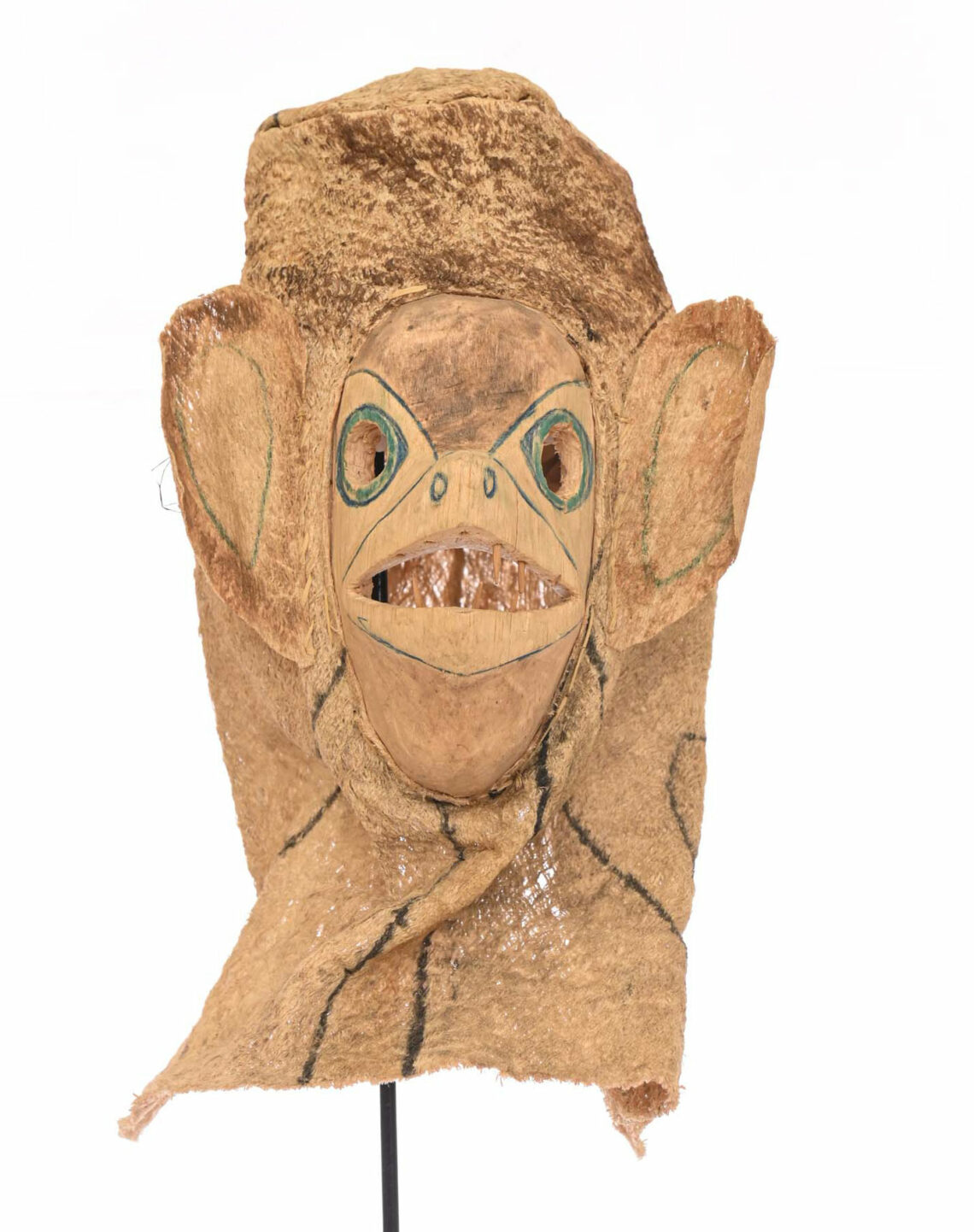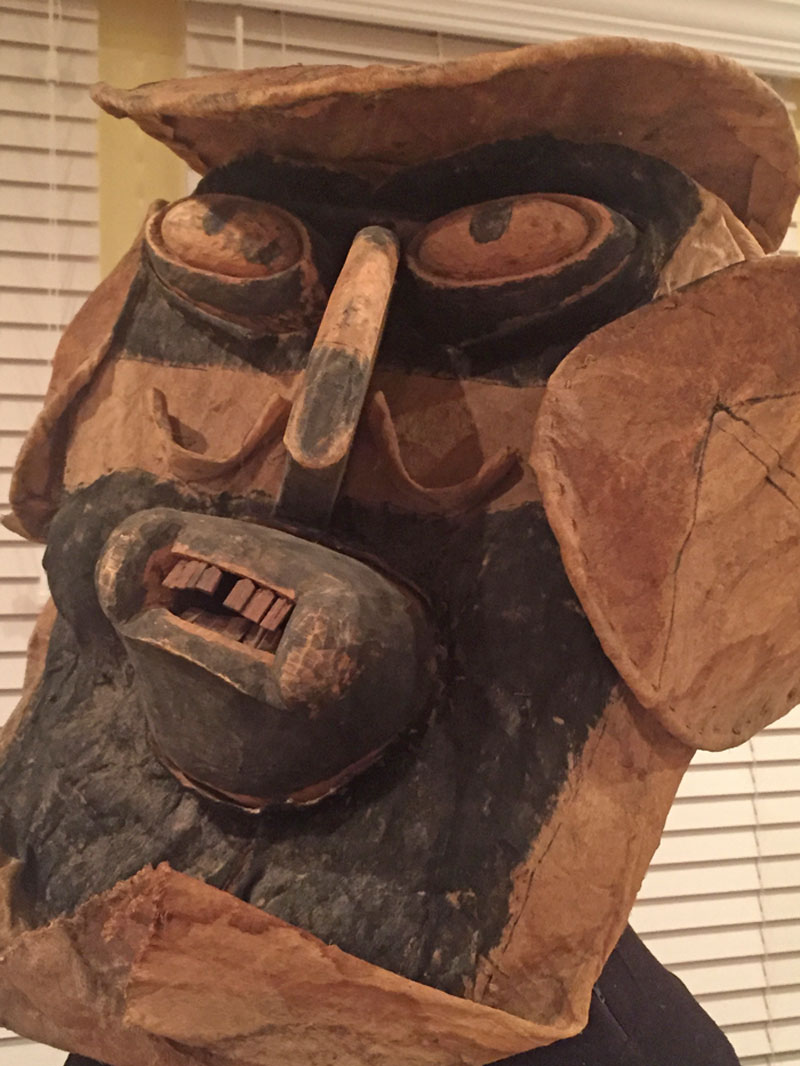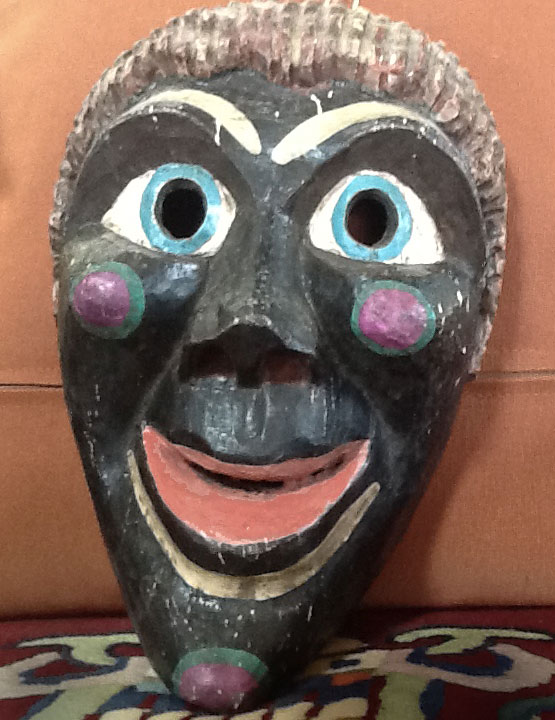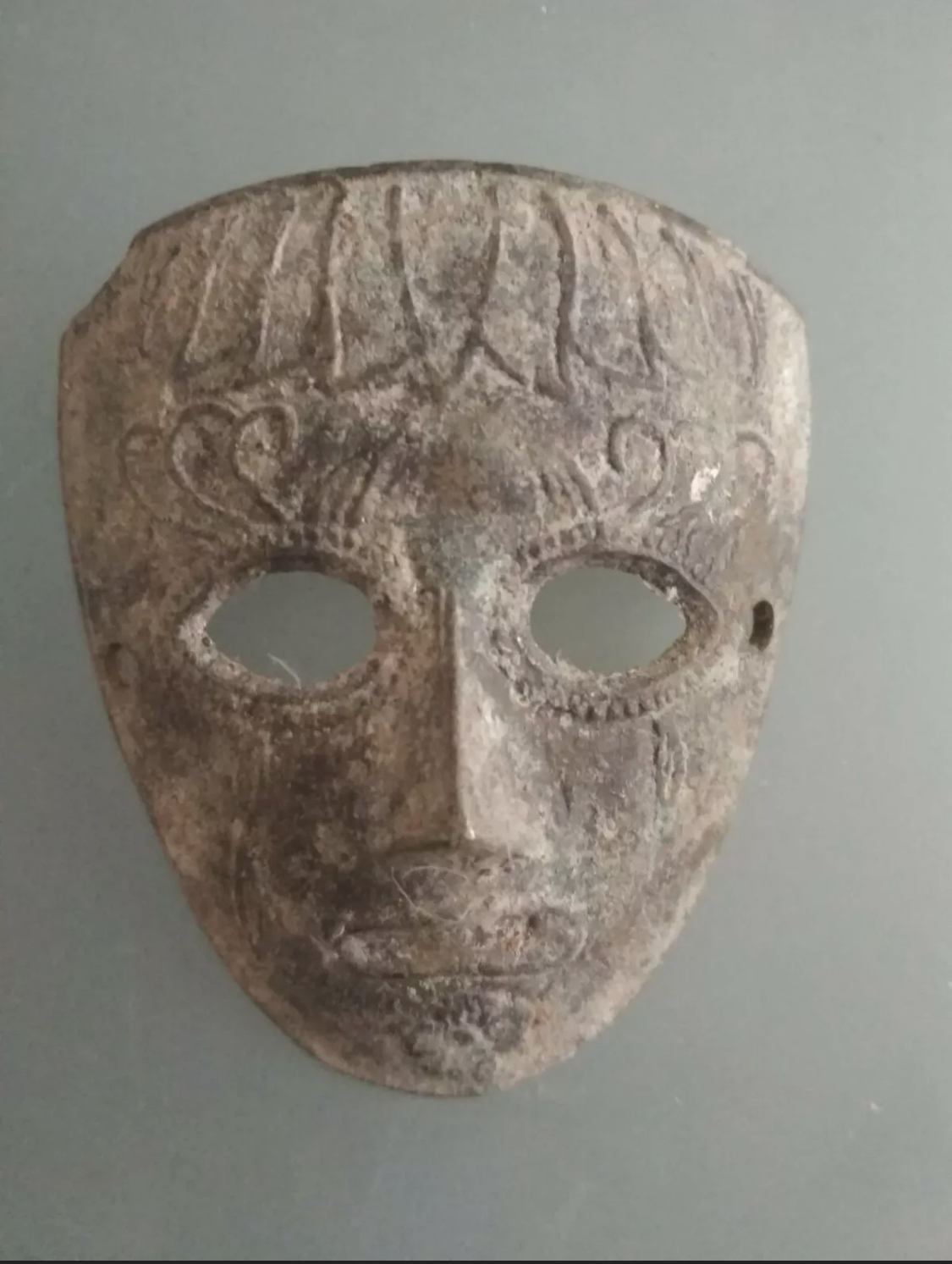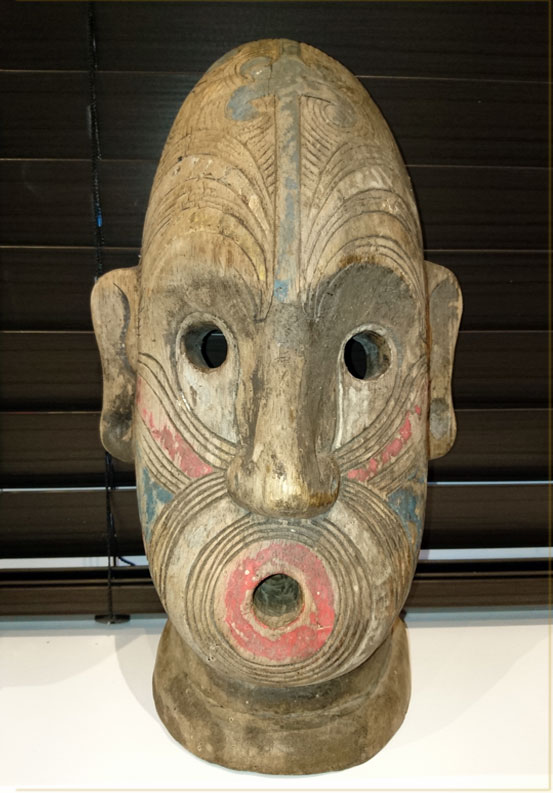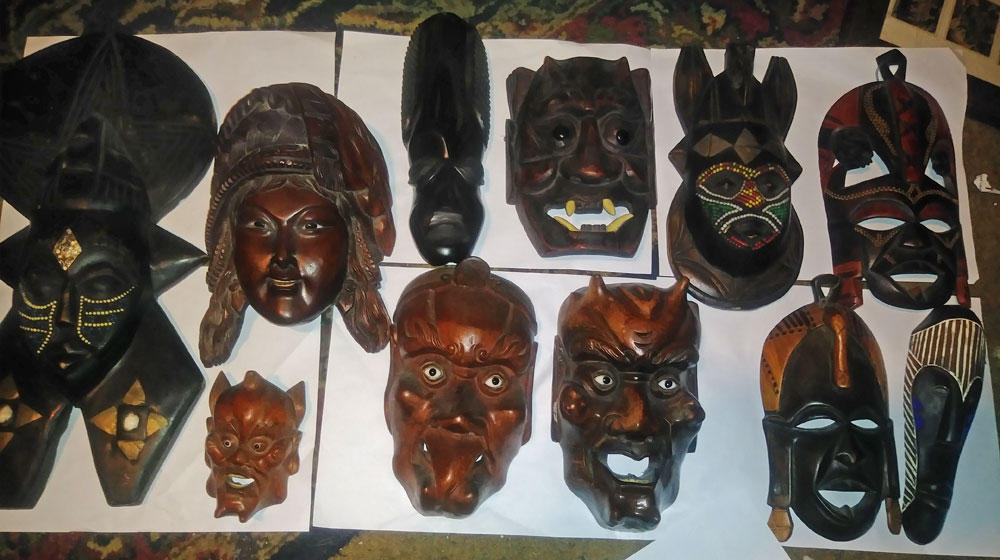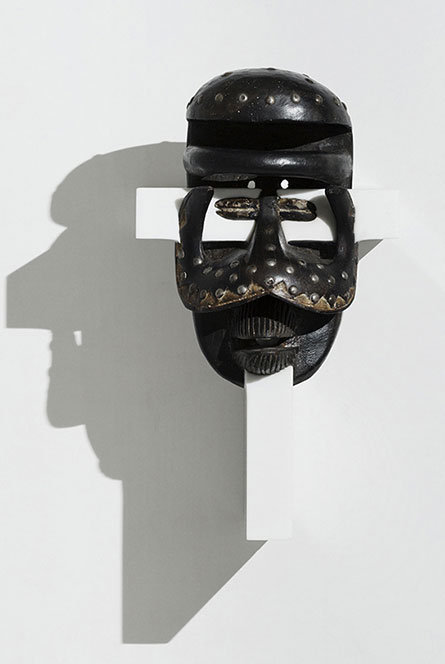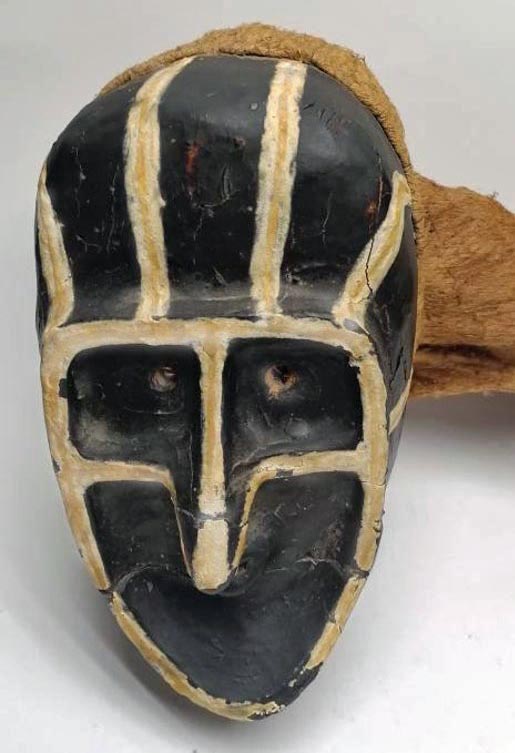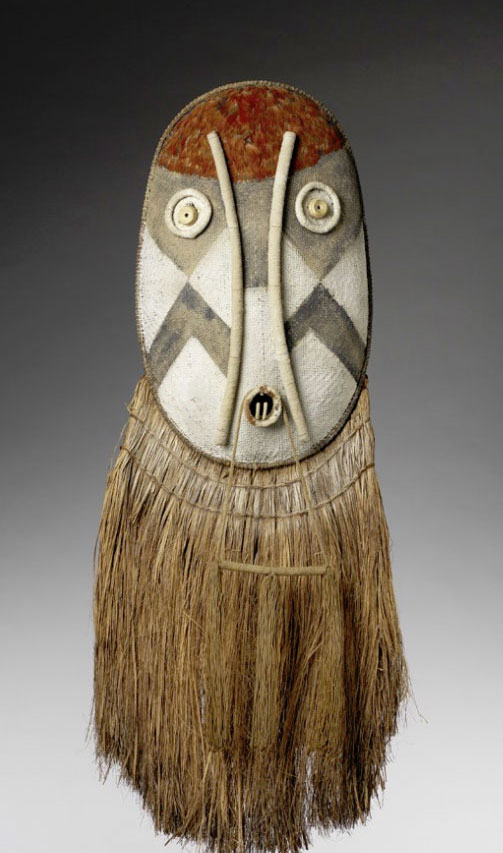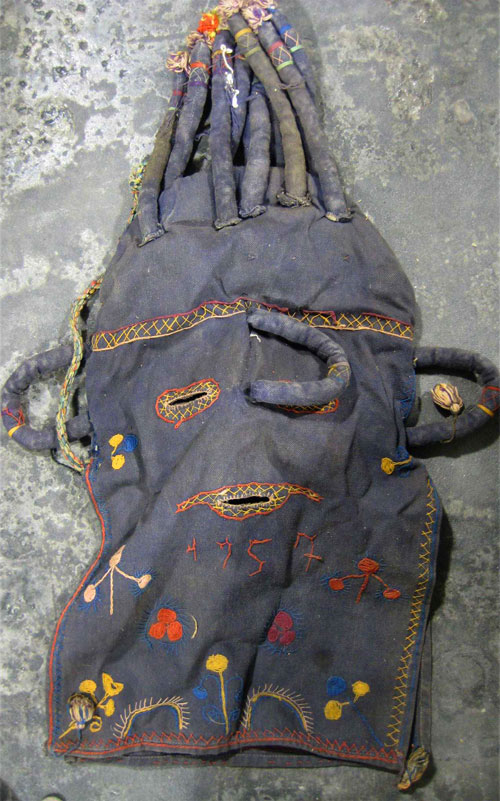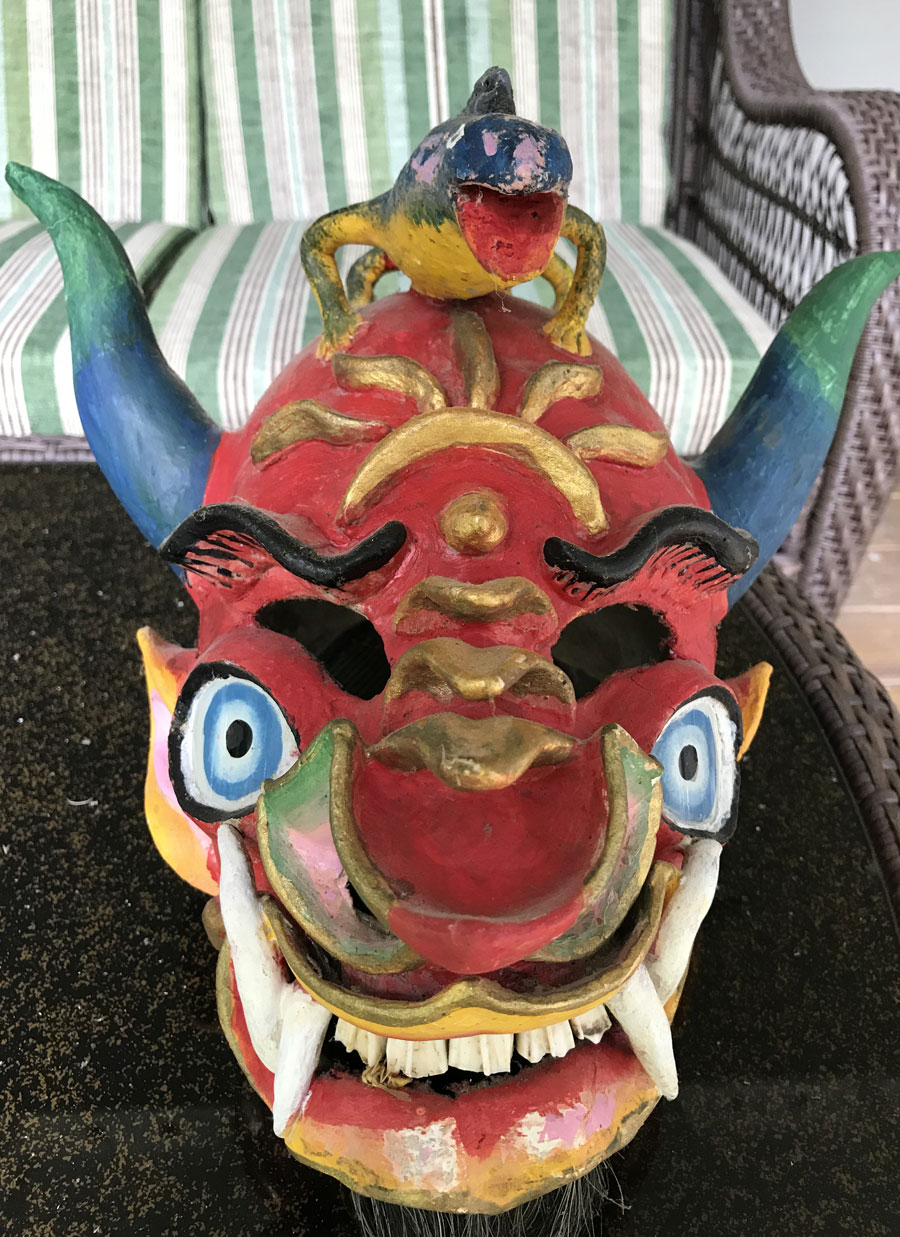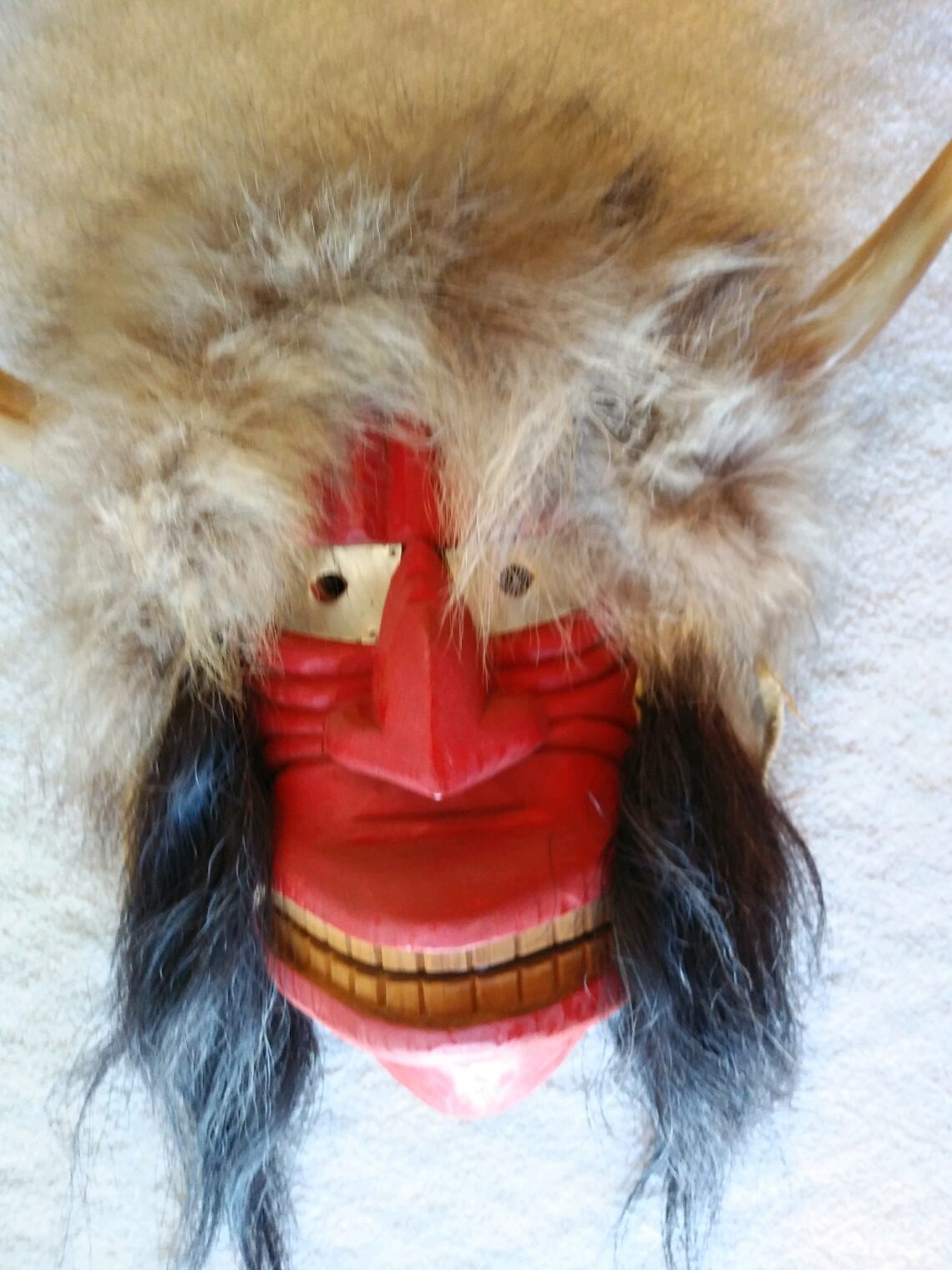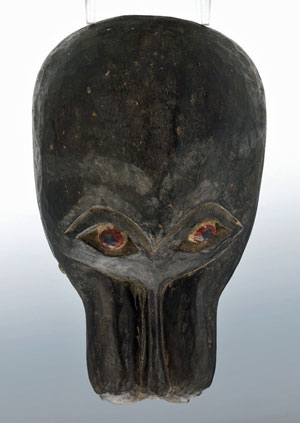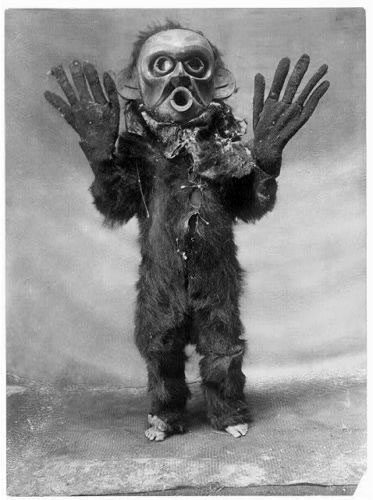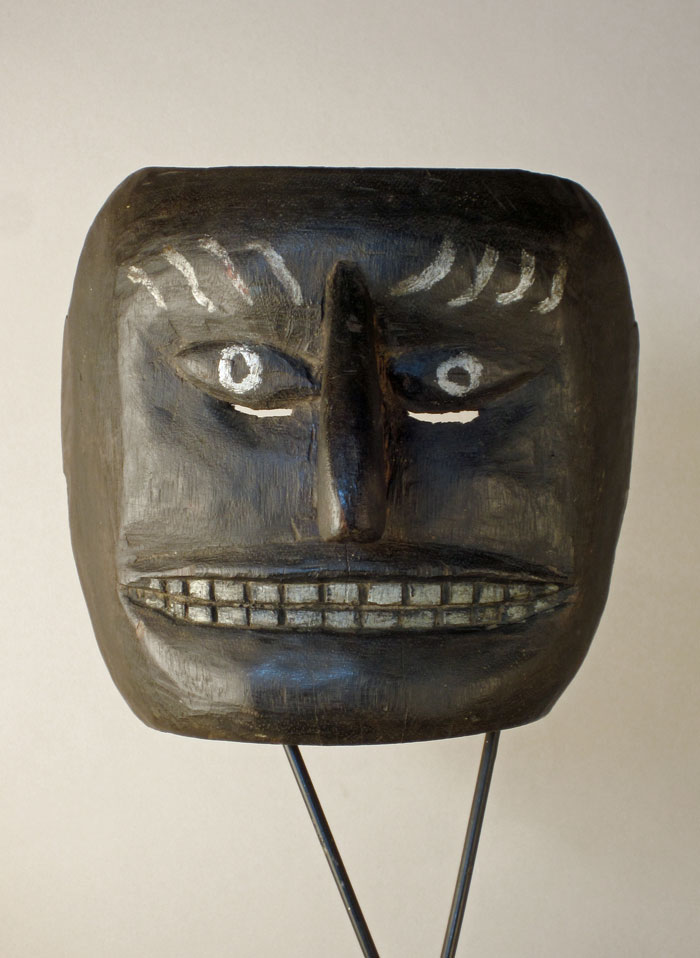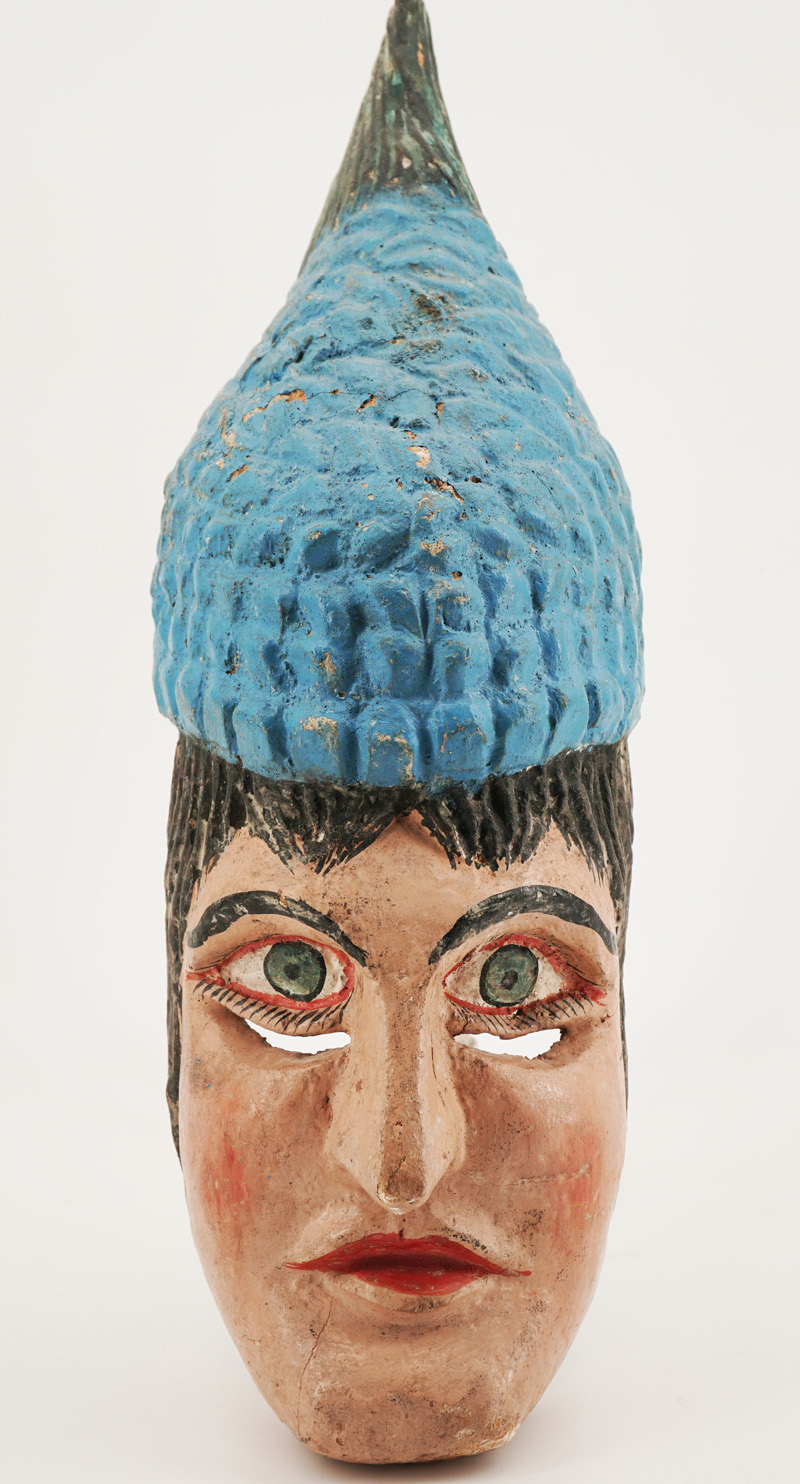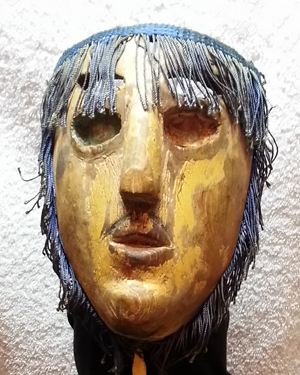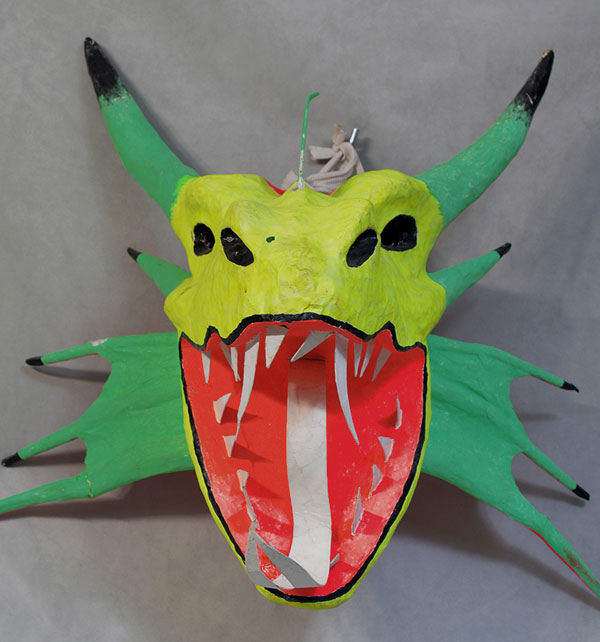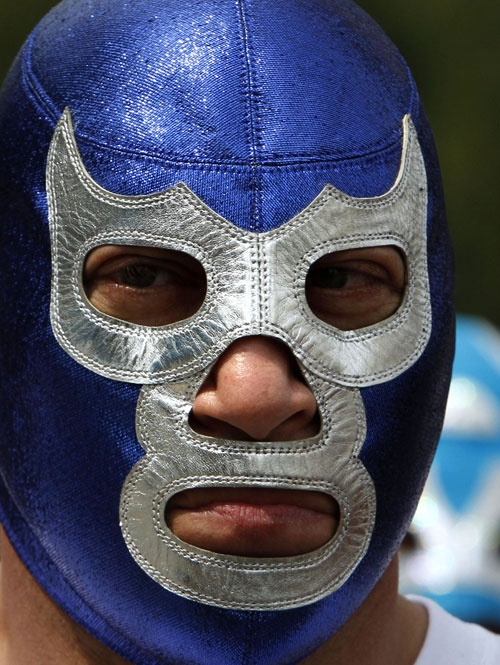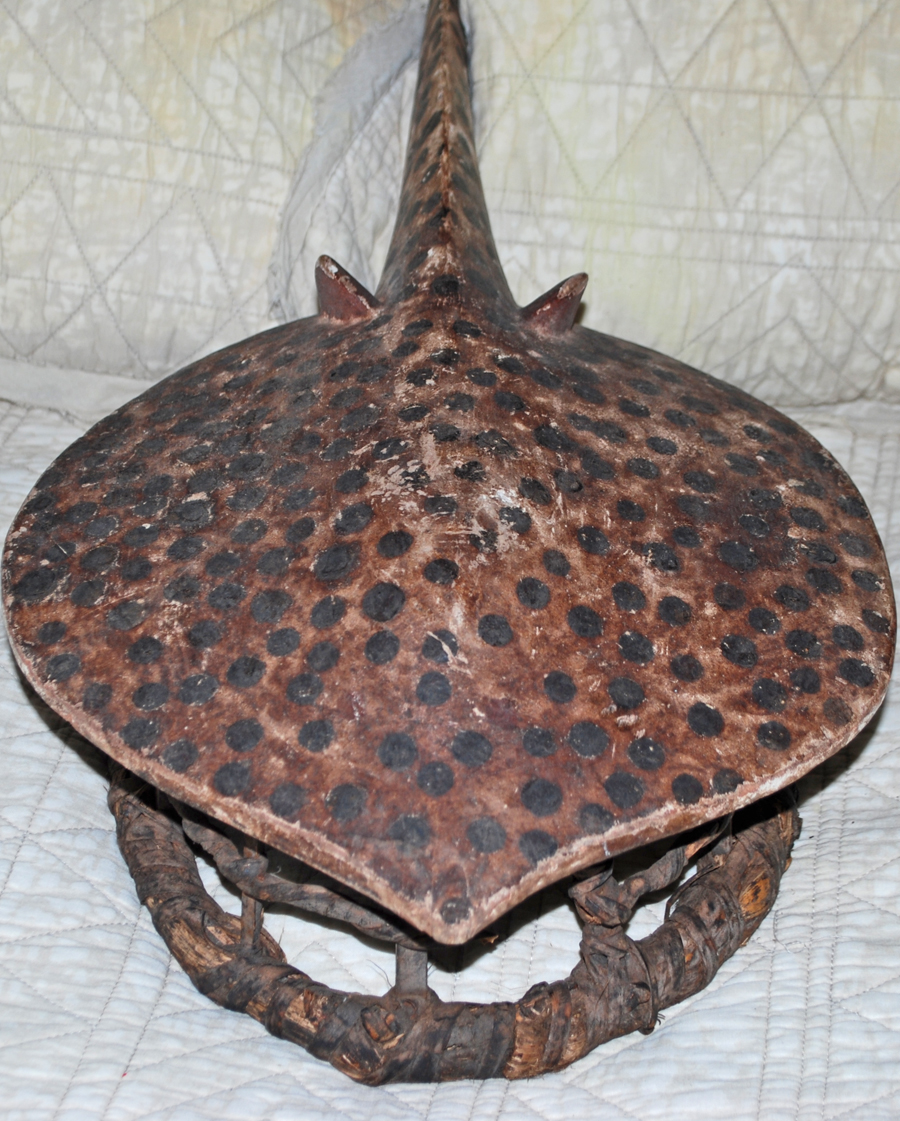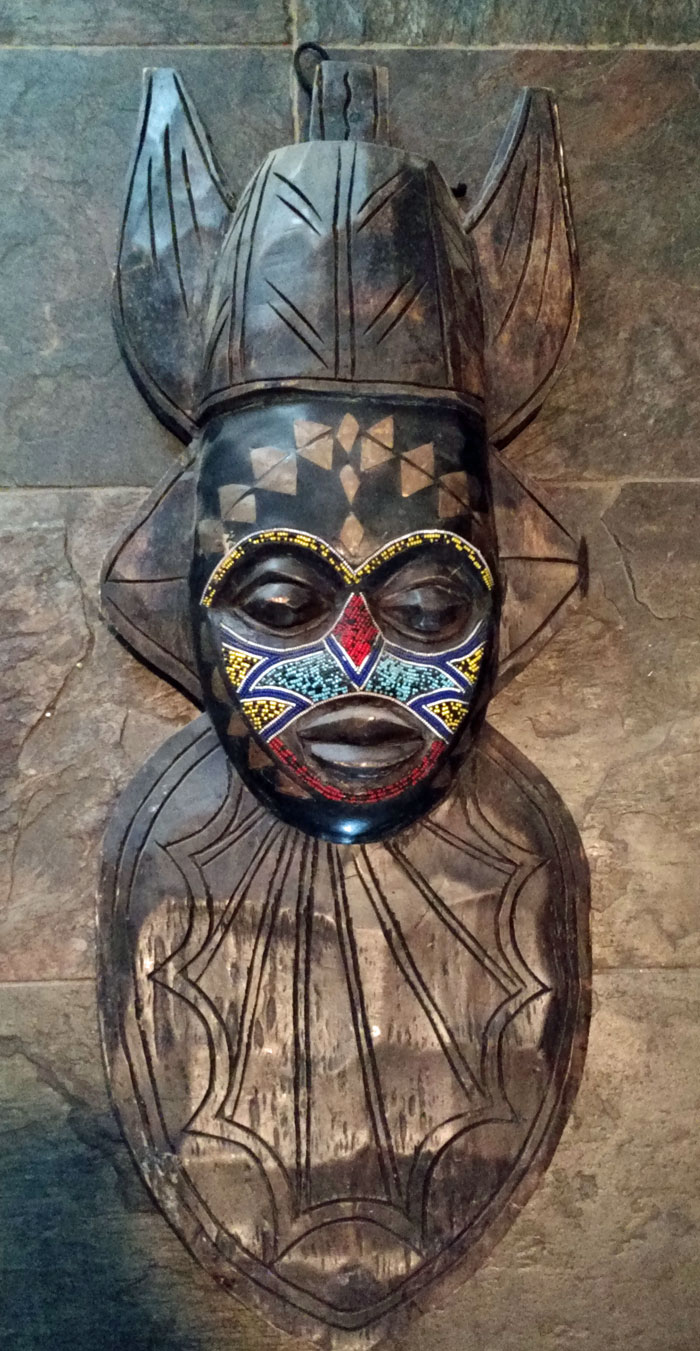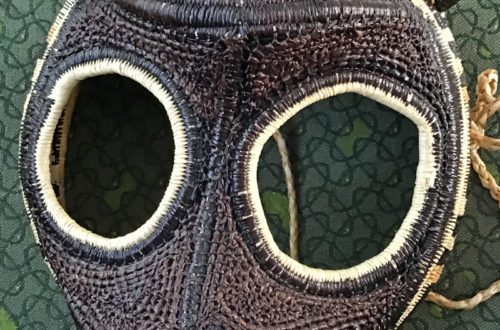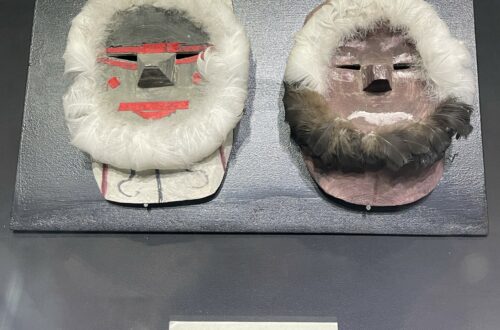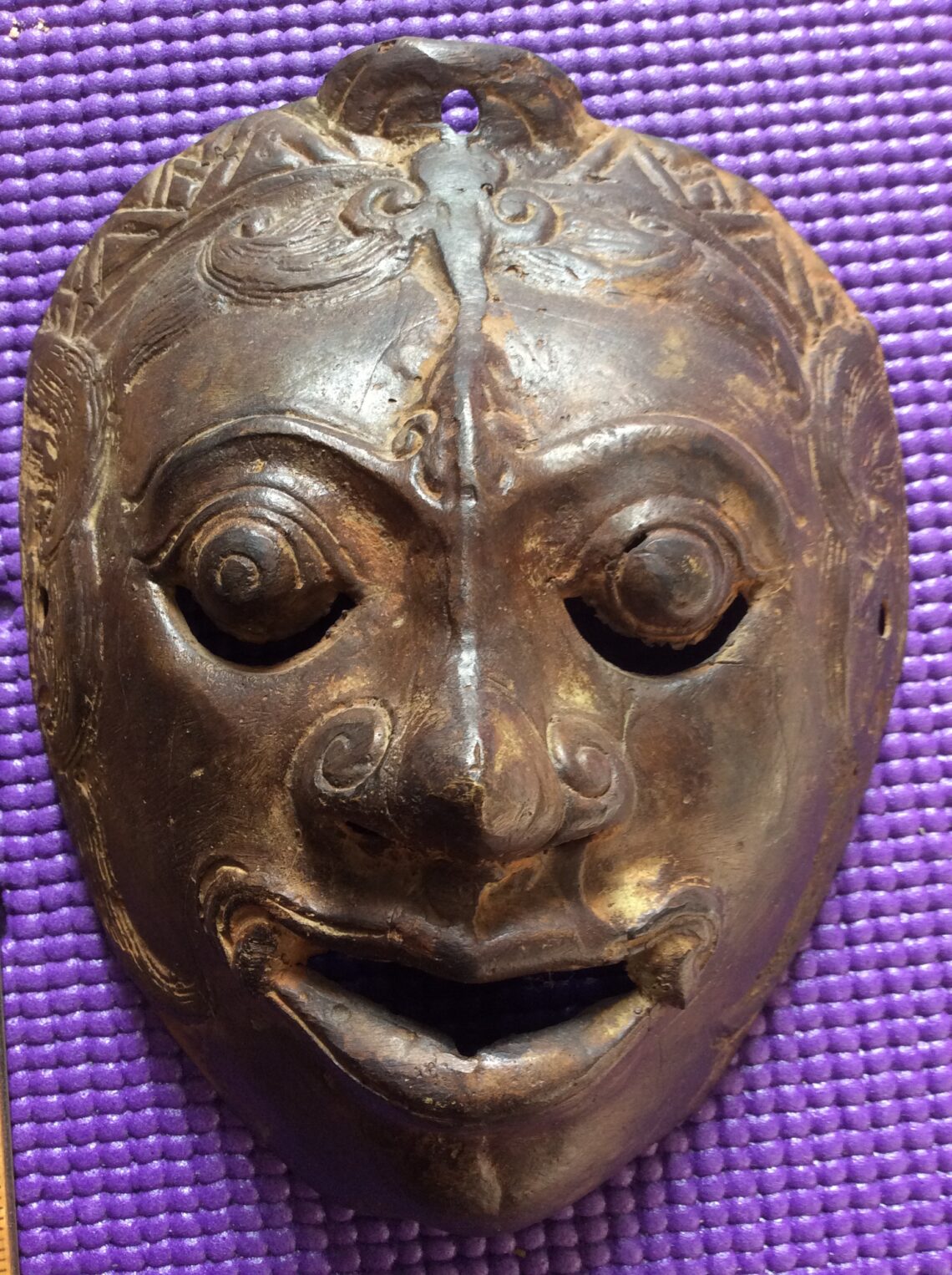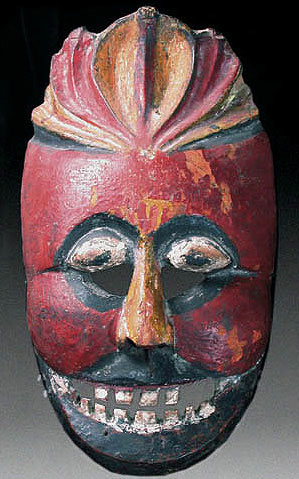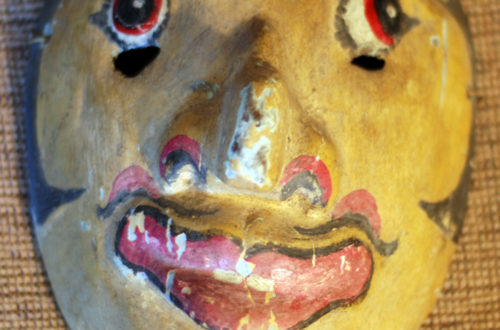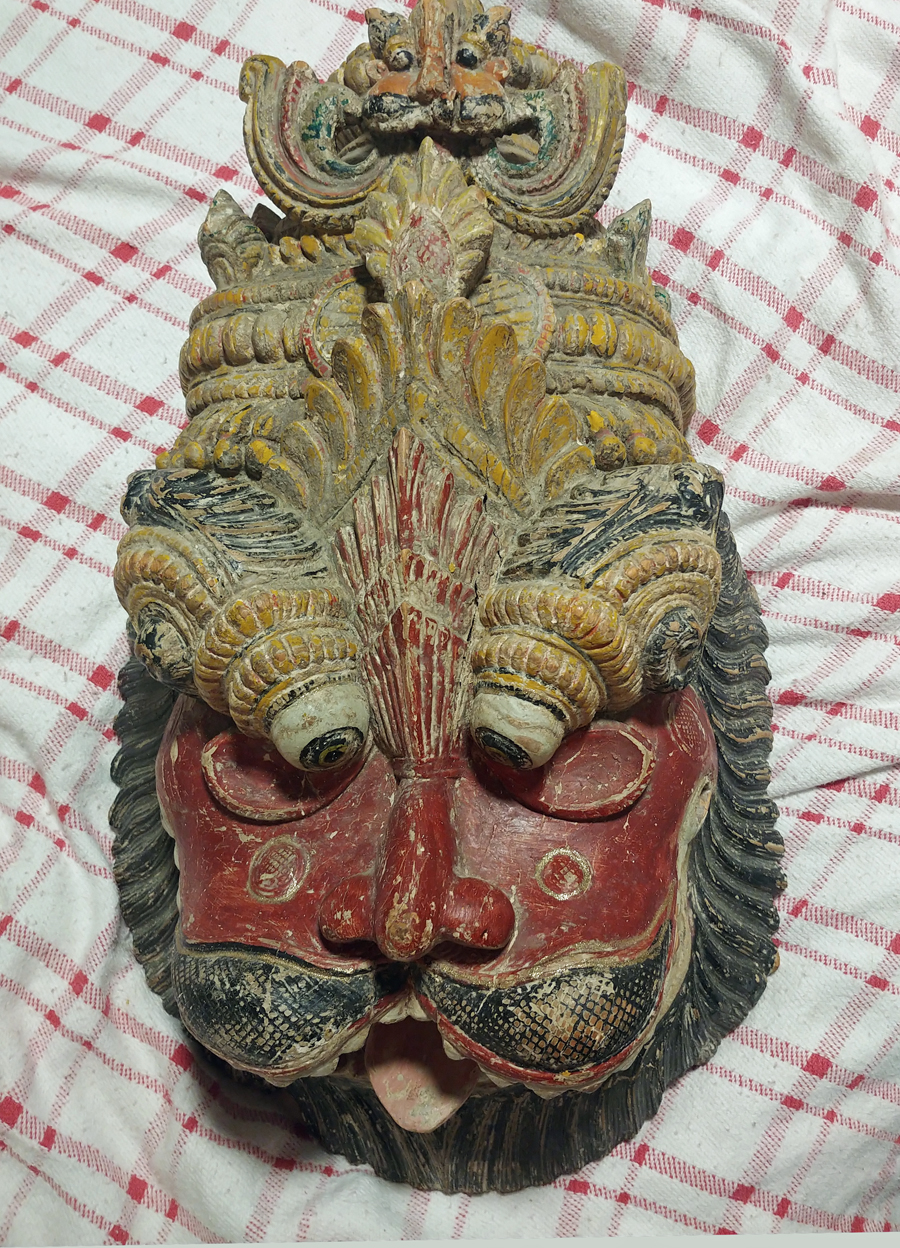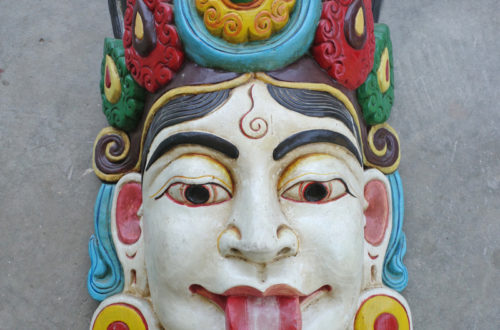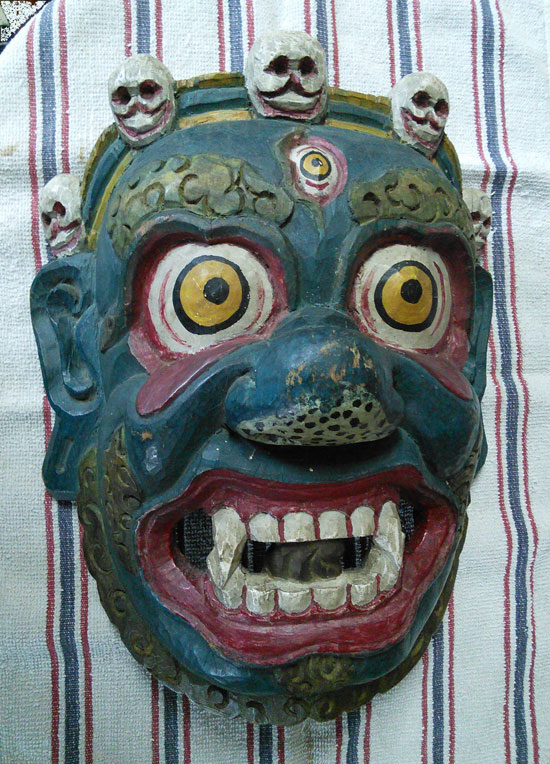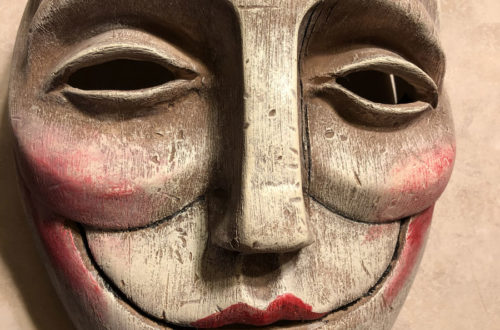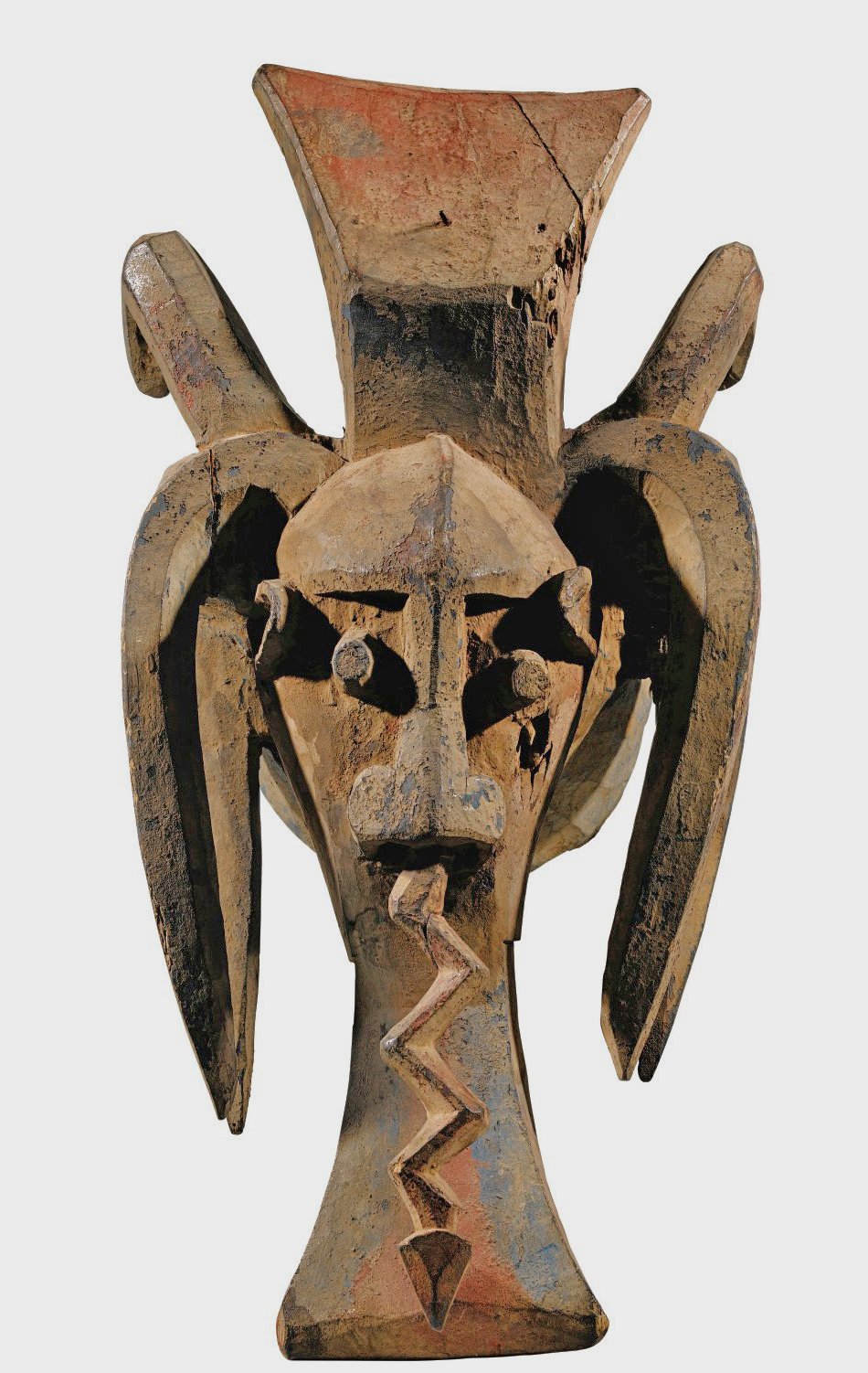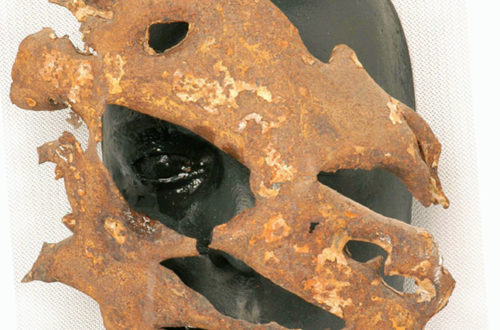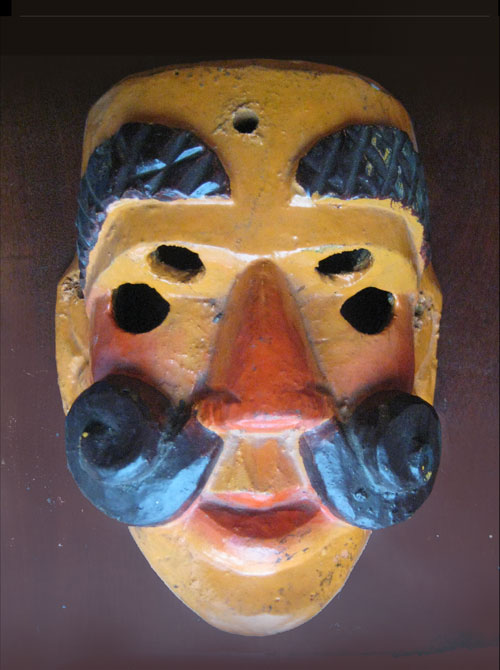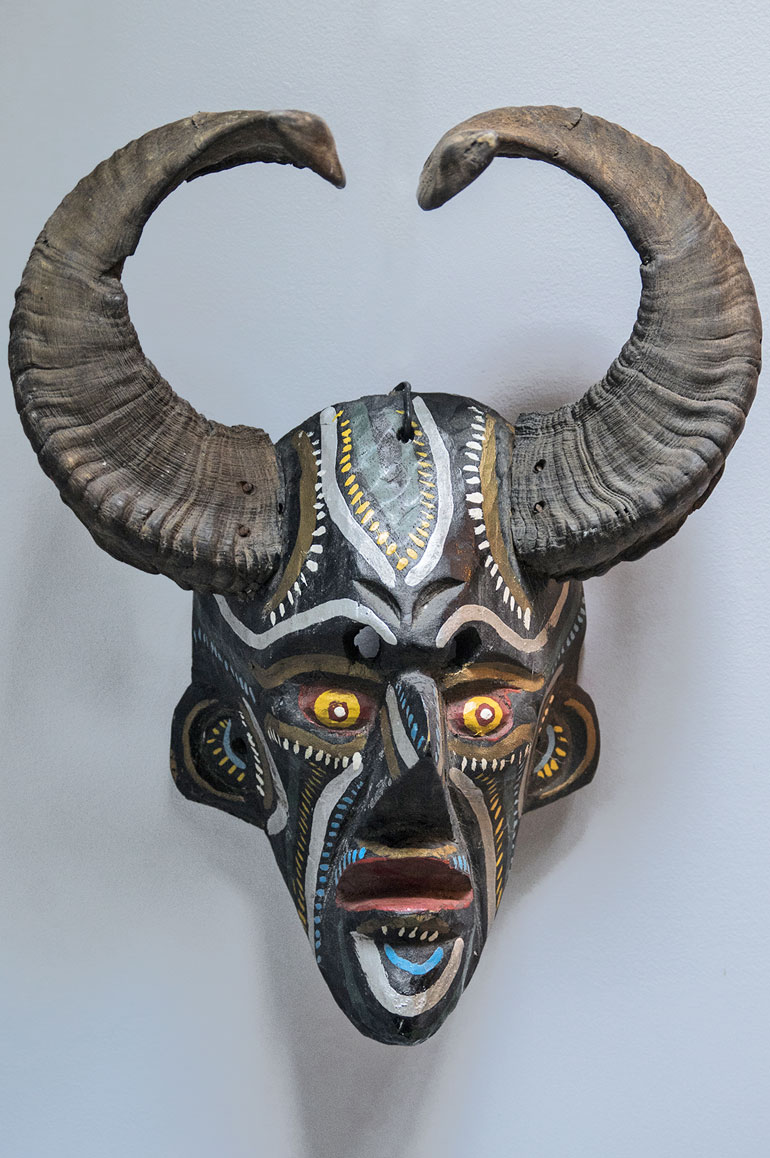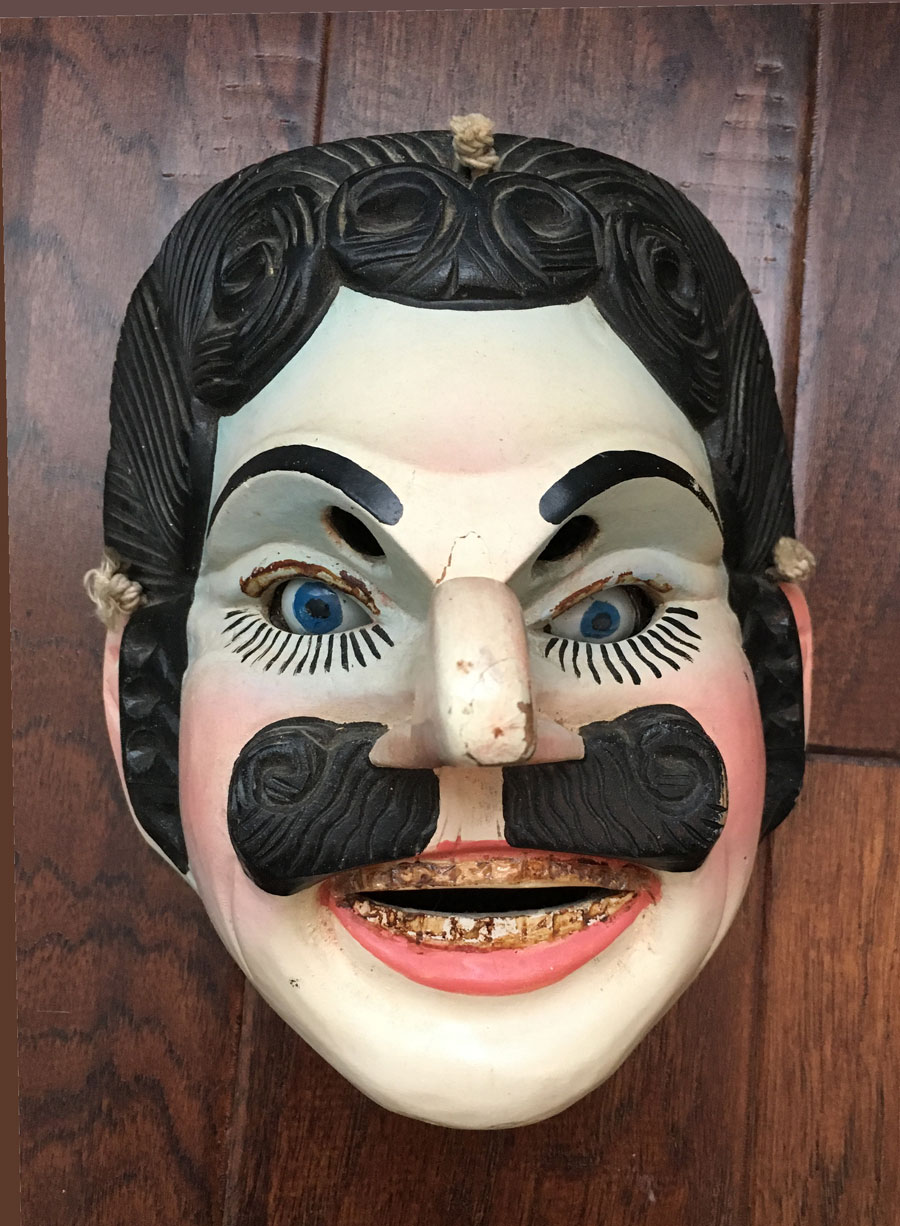Q: I am hoping that you might be able to help me identify this mask and shed some light about it’s origin/provenance/significance. My parents collected mostly African and Asian masks/statues and I consider myself to be (moderately) good at placing origin/regions, but this one completely stumps me.
-
-
A Mystery Mask
Q: I am a collector of Roman and Greek archaeological finds. A few days ago for my birthday they gave me this mask. I just don’t know about masks and I don’t know what culture or era it can go back to. It is about 6 cm long. Unfortunately, I can’t even understand what material it is made of. It could be lead. Alex
-
Piaroa-Huarime character mask
Q: I know this mask is from the Amazon. Alma, 1830 A: It would help to know from whom, when and where you got it; and how much you bought it for. These Amazon Indians live on the Orinoko River between Colombia and Venezuela. They’re unusual looking masks are made of blackened beeswax which has been caved and colored with white clay. The base and fabric are also of natural materials found in the surrounding jungle. I don’t know who this character represents, but it was made to be used used in ceremony or sold to exploring tourists. There are many different masks depicting gods and animals as well. Some…
-
Native American mask
Q: Would you happen to know where this originated and if it is valuable enough to be appraised? My deceased cousin traveled the world for years, and this is one of her treasures. Beverly, 1829 A: It is Iroquois in style, made in the USA, and maybe worth enough to be appraised. All kinds of people love to see Native American masks on the walls of their cabins and rec rooms. The value can go up according to signature, date and condition.
-
Mexican mask with pointed cap?
Q: I bought this mask at a online auction here in Switzerland. It was declared as antique Tyrolean mask. For me it looked more like Mexican? It is made of very light weight wood and rather small. The size is 43 cm x 14 cm. Thank you very much for your help. Kind regards from Zurich. David, 1827A: This mask looks more Mexican to me as well, though I can’t be sure. I haven’t seen a mascara with this kind of cap before. I hope some viewer will make a comment.
-
Rare stingray mask?
Q: A friend gave me this mask when she was moving as I have always admired it. It fits on top of your head rather than over the face. It is about 21 inches long by 12 inches wide. It looks like a manta or sting ray. Any info? Brad A: I’m finally back to posting mystery masks. Yours is going to be difficult. I have never seen a stingray mask in my 50-year career of collecting. It is probably from someplace on the Atlantic Coast of West Africa. It seems to be new and and made for the tourist trade. But I can see in a river ceremony…
-
Repro of metal mask from Java
Q: Mask made of metal for you to look at. Any feedback information about this mask will be helpful. Thanks, Ezra. 1825 A: This is also a nice reproduction of a Javanese mask. Like the previous Indian mask, it is something most collectors (like me) would want to keep. Of course, you should not pay a lot of money for it. B-
-
Repro of old India mask
Q: I recently bought this mask (or wall art) from a auction and I don’t know anything about it. It looks old. If you could tell me who it is supposed to be and what region it comes from I would be pleased. John, 1824 A: You made a good find, if you didn’t pay too much. It is highly detailed and very entertaining. I think it is Indian, but am not sure. Let’s hope some of our viewers can help us with that. What I can tell you is that it was made by a talented carver for commercial purposes. This kind of business now is growing all…
-
Mask for the Ijaw water spirit
The Ijaw are a large ethnic group of about 14 million people in the delta region of Nigeria, West Africa. Traditional religious practices center around “Water spirits” in the Niger river, and around tribute to ancestors. Although the Ijaw are now practicing Catholicism, Anglicanism and Pentecostal , they also have elaborate traditional religious practices of their own. Veneration of ancestors plays a central role in Ijaw traditional religion, while water spirits, known as Owuamapu figure prominently in the Ijaw pantheon. In addition, the Ijaw practice a form of divination called Igbadai, in which recently deceased individuals are interrogated on the causes of their death. Ijaw religious beliefs hold that water spirits are like humans in having personal strengths and…
-
The basic Guatemalan mask
Q: Will you share this mask with your viewers? It’s an old Guatemalan mask, probably from late XIXth or early XXth century. This is suggested by the beautiful dark patina on the back with smooth edges, a kind of patina typical of old dense hardwood, here probably cedar. So different from the back of artificially aged recent masks. Another characteristic is the aspect of shelves of the carving of the back, found on very old masks only. It was probably a female character, suggested by the holes for earrings. Nevertheless, the same face could be used as male character, as it has been recently confirmed to me by Don Nery…
